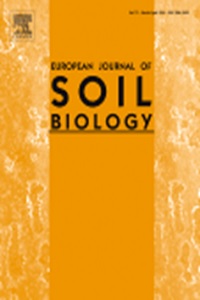The effect of crops and farming practices on earthworm communities in Soummam valley, Algeria
Abstract
The response of earthworm communities to farming practices was assessed in 33 farms of the Soummam valley (Algeria). Market gardening was the most intensive practice with frequent tillage (94% farms), application of chemical (94%) and organic (70%) fertilizers and pesticides (70%). Orange tree plantations also received organic fertilization (42% of farms), NPK (95%), pesticides (71%) and tillage (95%) whereas in Olive plantations only 30% farmers used fertilizers and pesticide application was rare. Earthworm communities comprised 5 species: the ubiquitous Apporrectodea caliginosa, Aporrectodea rosea, Allolobophora chlorotica and Microscolex dubius and the native Octodrilus complanatus. Average density decreased from market farming areas (176 ± 27.6 ind m?2) to olive tree (149 ± 10.4 ind m?2) and orange tree plantations (73 ± 9.2 ind m?2). Biomass followed a slightly different order with a maximum of 44.0 ± 10.2 g fw m?2 in market farming areas followed by orange plantations (38.3 ± 8.0 g fw m?2) and olive plantations (35.6 ± 2.78 g fw m?2).
Earthworm populations were comprised of 90% A. rosea and A. caliginosa. A. rosea favored market garden and olive systems while A. caliginosa did not show any clear preference. O. complanatus were abundant in market gardening sites with organic fertilizers whereas M. dubius was absent from orange tree plantations. Communities significantly covaried with farming practices and not with soil characteristics. In general, the density of all species was affected by intensification although the native species O. complanatus benefited from organic fertilization. Farming practices in the valley maintain rather high earthworm activities in spite of significant uses of chemical inputs. Further intensification might however affect these communities that showed clear sensitivity to all chemical inputs and tillage.

